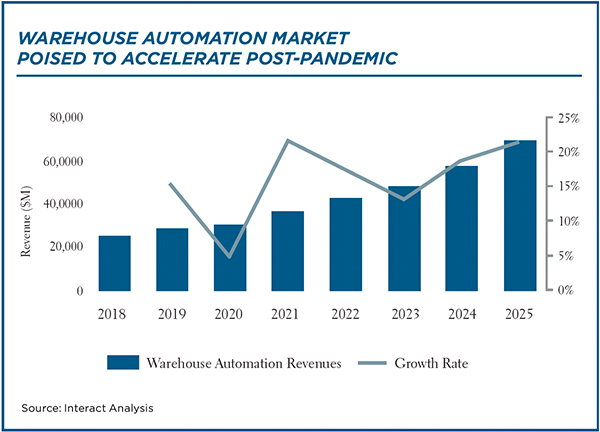[ad_1]

The global warehouse automation market will grow from $29.6 billion in 2020 to $69 billion in 2025 (see chart), says an Interact Analysis report, largely driven by e-commerce retailers that sell groceries and general merchandise, such as JD.com, Amazon, and Target.
Fixed automation, such as automated storage and retrieval systems, conveyors, and conveyor-based sorters, will remain the most common form of automation, the report says, but there is also a rapidly growing trend in adopting flexible mobile automation solutions.
Many automation companies saw a plateau in warehouse automation revenue while order intake increased significantly due to delays in project completion and supply chain limitations. As a result, the warehouse automation market will stabilize in 2021 and 2022. By 2022, the market will return to normal and face a permanently accelerated post-pandemic growth rate, the report says.
Significant growth in the American, European, Middle Eastern, and African markets will come from the general merchandise and grocery sectors. The single fastest-growing vertical is grocery, which is projected to grow from 12% of the market in 2020 to 16% in 2025.
[ad_2]